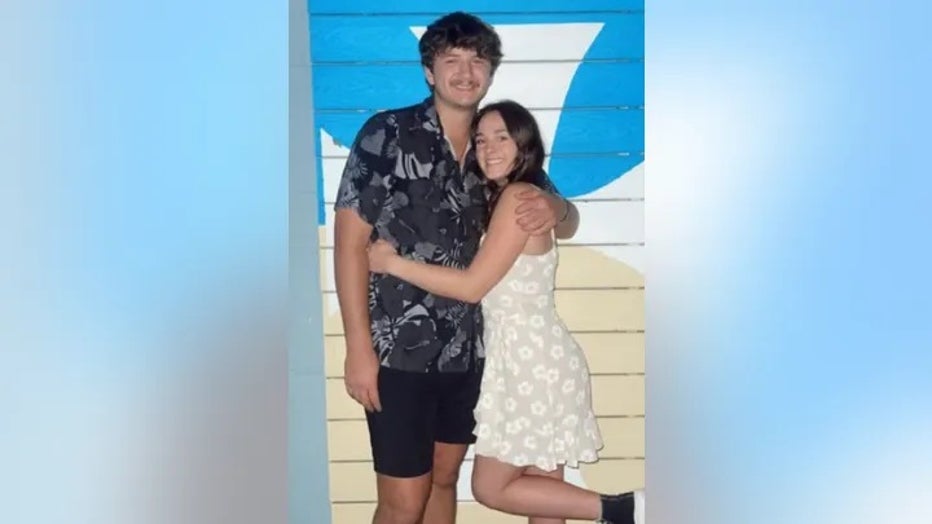Idaho murders: ‘Rage,’ ‘randomness’ among similarities to Ted Bundy’s infamous killings, former attorney says
MOSCOW, Idaho - A longtime criminal defense attorney who represented serial killer Ted Bundy is weighing in on similarities and differences between the horrific acts of his infamous former client and those of the uncaptured killer behind the University of Idaho murders.
John Henry Browne served as a criminal defense attorney for Bundy in the 1970s and 1980s. To this day, he said, Bundy has "haunted" him for his "whole career," to the point where he prefers not to discuss the man whom he described as being "born evil."
Over the more than three weeks since University of Idaho students Xana Kernodle, Ethan Chapin, Kaylee Goncalves and Madison Mogen were killed, several people have drawn comparisons between the unsolved stabbing deaths and Bundy’s crime spree of the 1970s.
Browne, now a Seattle-based defense attorney with at least four decades of experience, said he sees similarities between the pair.
"Just the randomness of it is actually something that does stand out," he told Fox News Digital when reached by phone Tuesday. "Of course, most of Ted's misbehavior was random. There were times when Ted would follow people and then decide not to kill them. And that was his way of exercising his grandiosity, you know, ‘I can control life here and there.’"
RELATED: Idaho murders: Slain student's family plans to hire lawyer amid tensions with police
Browne, who now spends much of his time defending wrongly convicted or innocent defendants, pointed to how the University of Idaho victims were involved in Greek life, much like Bundy’s 1978 murders of Margaret Bowman and Lisa Levy, who were Florida State University Chi Omega sorority sisters.
He likened the crime scene at 1122 King Road to a "de facto sorority house" and described the victims as a "really attractive young group."
Speaking to Fox News Digital on Tuesday, Brown added, "Most crimes of this nature are based on power and anger and more so than sex."
Browne said Bundy held animosity "toward women in general because of a breakup he had when he was in college with somebody who he, I think, held a grudge against forever."
"His crime spree, according to what he told me, lasted for probably about four or five years before he was apprehended in Utah," Browne went on. He was arrested in Utah in 1975 and was sentenced to prison time for aggravated kidnapping. He was facing several other murder charges when he escaped his Utah jail cell two years later.
RELATED: Police address stalker rumor in University of Idaho murders investigation
On the run once again, Bundy made his way to Florida, where he continued his killings.
Bundy was found to have attacked four female victims, and killed Bowman and Levy, when he entered the FSU Chi Omega sorority house in January 1978. He then went elsewhere to continue his attacks.
One month later, Bundy was arrested in Florida and later identified as the wanted killer.
Browne said he believed his client "would never have been caught if it wasn’t simply sheer luck of a police officer" who stopped him for driving a stolen car.
RELATED: Why experts think sexually frustrated suspect could be behind horrific Idaho student slayings
Bundy was ultimately convicted and later executed for the women’s deaths and also for the murder of 12-year-old Kimberly Leach. Bundy allegedly admitted to killing at least 30 people before he was put to death.
Browne said he believes that the Moscow quadruple homicide was "a crime of anger and rage."

The home where four University of Idaho students were murdered Nov. 13. (Derek Shook for Fox News Digital)
Kernodle and Chapin, both 20, and Mogen and Goncalves, both 21, were found killed inside the King Road home on Nov. 13.
Kernodle, Goncalves and Mogen lived at the home with two other women, who were not injured. A sixth person was listed on the lease but was said to have moved out and who police said was not involved.
EMOTIONAL IDAHO POLICE CHIEF ON QUADRUPLE MURDER CASE:
Officials have said the victims were asleep around 3 a.m. and 4 a.m. on Nov. 13 when they were stabbed multiple times on the second and third floors of the three-story home. The medical examiner determined some of the victims had shown signs of fighting back.
Moscow police officers responded around 11:58 a.m. to a report of an "unconscious person" at the address, but several people had gathered at the crime scene by the time police arrived, officials said.

Ethan Chapin and Xana Kernodle (Instagram/@xanakernodle)
Investigators believe the attack was "targeted," police said, despite some confusion as to how or why. Police have not identified the intended victim.
The 911 call "originated from inside the residence" and came from one of the surviving roommates' cellphones, police said. Multiple people allegedly spoke to the dispatcher before officers arrived.
Mogen and Goncalves were sleeping on the same floor, in the same bed, when they were stabbed multiple times, according to police and family members. Chapin and Kernodle were on a different floor.
RELATED: Idaho murders: Students 'fearful' as quadruple homicide remains unsolved with no suspect
Investigators have received more than 2,645 emails and more than 2,770 calls to the City of Moscow tip line, police said. The FBI has received more than 1,084 digital media submissions.
The Moscow Police Department is urging the public to submit any images or information that they think could be important or useful to their investigation. They can do so by calling 208-883-7180, submitting tips through tipline@ci.moscow.id.us and sending digital media here.
Police clear up 'miscommunication' on whether Idaho students were 'targeted' in brutal killings
Law enforcement officials investigating the murders of four University of Idaho students have issued multiple statements in the span of 24 hours to clear up miscommunication on whether the victims were "targeted."
Authorities have also created a dedicated webpage related to the King Road attack.

